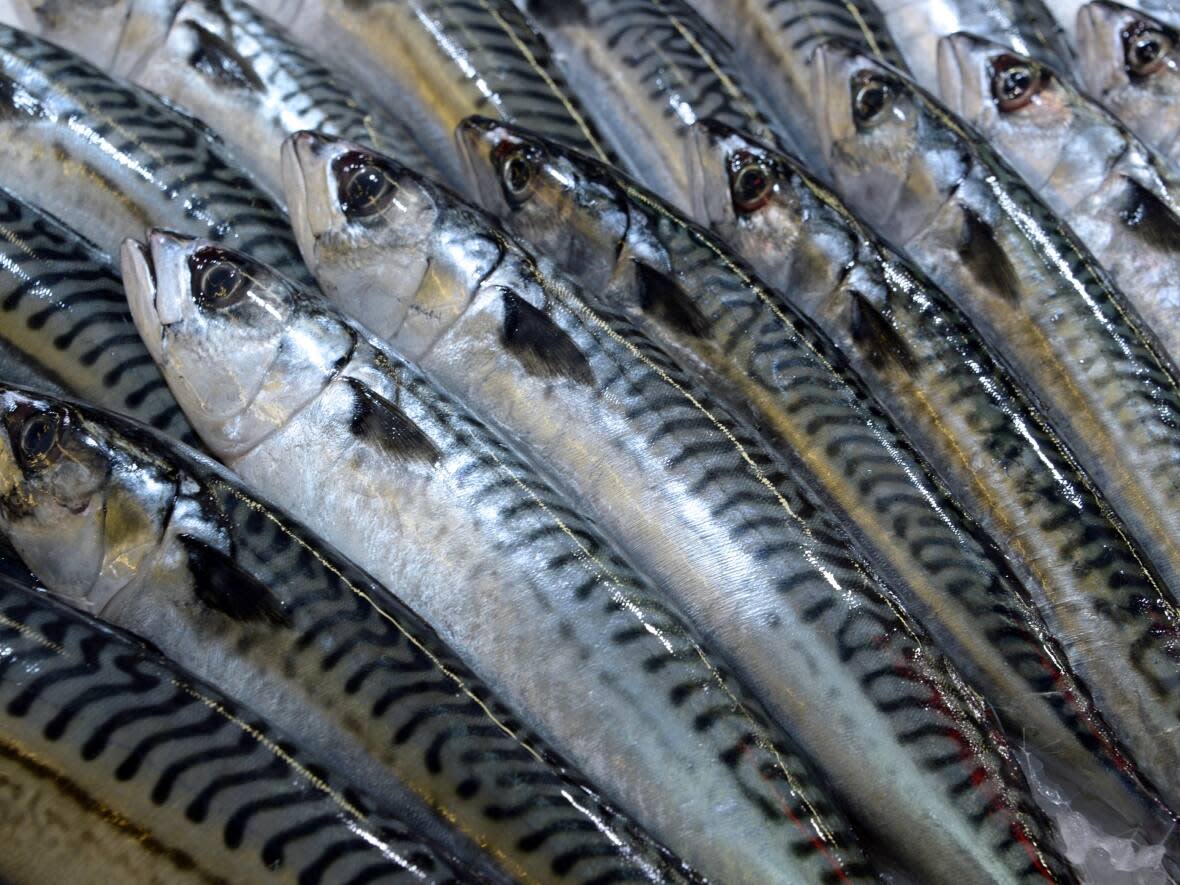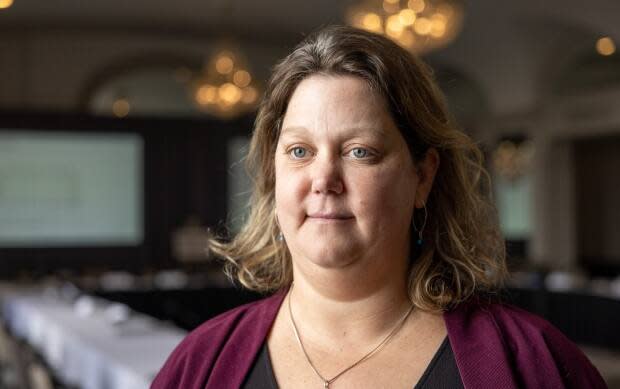Atlantic mackerel population continues to decline, a year after fishery moratorium

The Atlantic mackerel population is continuing to decline after a decade of falling numbers, according to a federal assessment presented to industry and environmental groups in Halifax this week.
According to the 2022 assessment, mackerel stock remains in the "critical zone" — where serious harm is occurring — and the average number of fish reaching spawning age is only 27 per cent of what it was between 1969 and 2011.
"The amount of young fish entering your population has been rather low in the last couple of years. That's concerning," Elisabeth Van Beveren, a biologist with the federal department of Fisheries and Oceans, said during a break of the Atlantic mackerel advisory committee.
"And then there's an age structure, so you're going to have less and less of those older fish in the population. So all of that put together means that your stock isn't doing very well."
This latest assessment leaves Fisheries and Oceans Minister Joyce Murray with a big decision in the coming weeks — whether to continue a regional mackerel fishing moratorium that was imposed in 2022 to try to rebuild the depleted population or remove it.

The department is not tipping its hand just yet.
"The Atlantic Mackerel Advisory Committee process is an important part of Minister Murray's considerations. That process is ongoing and a decision will be made following the completion of the scientific and consultation processes," it said in a statement to CBC News.
Mackerel is an important food source for other species, including seals, seabirds, whales and other fish.
The 2022 assessment included a rough estimate of the impact of predation, reporting to the advisory committee that grey seals in Canada ate 8,000 tonnes of the fish in 2020 and northern gannets ate 15,000 tonnes.
'Colossal mishandling' by DFO, union says
Mackerel is also a major source of bait for the region's lobster business — valued at over $3 billion in 2021 — making the shutdown a controversial one in Atlantic Canada.
The moratorium also caused some resentment after it was placed in Canada, while the United States allowed a scaled-down fishery on shared stock. In January, the U.S. announced a reduced quota for mackerel for 2023.
In Newfoundland and Labrador, seafood companies and fishermen have claimed for years that DFO has it all wrong because mackerel are plentiful around their coast.

In St. John's earlier this week, the Fish, Food and Allied Workers Union demanded the fishery reopen.
"We've brought you here today to draw attention to DFO's colossal mishandling of the Atlantic mackerel fishery and the failure of DFO science to accurately estimate the mackerel biomass," Greg Pretty, president of FFAW, said at a news conference Monday.
Van Beveren rejected the union's lobby, saying that mackerel, as migratory species, can be locally abundant, but in trouble overall.
"Even if your stock isn't doing well, it doesn't mean you can't see any fish anymore," she said. "You're going to see these really big schools still coming in, but that doesn't say anything about the stock as a whole, because it's a regional biomass."
DFO searched for, but did not find major spawning areas off Newfoundland, concluding the key source of spawning is in the Gulf of St. Lawrence, where the annual egg survey is conducted.
"There's no evidence at all that there's a big shift in spawning distribution, so that makes us very confident in the results we're showing," Van Beveren said.
2,500 tonnes quota proposed
Martin Mallet of the Maritime Fishermen's Union does not dispute the 2022 assessment but said mackerel can still rebuild with a regional quota of 2,500 tonnes — about 10 per cent of the spawning biomass, or the total of fish capable of reproducing.
"The stocks are depleted. However, are they depleted to a level that merits a full moratorium? That's where we say no, there should be a small percentage of fishing going on," Mallet said.

Katie Schleit, an environmentalist with Oceans North, said it's too early to see the impact of the moratorium because the assessment takes data into account as of last year.
"Next year, we'll be seeing fish that have not been fished for a year, so let's hope we'll have some positive environmental conditions," Schleit said.
She said the government's commitment to rebuild stocks means the moratorium must continue.
"The scientific basis that underpin that decision is really strong and it continues to be strong, after this assessment," she said.
"The science team at DFO has been looking into all of the concerns that industry have and still we end up with the same unfortunate conclusion, which is that the stock is in the critical zone and according to our own laws around rebuilding fish populations, the minister has to keep the fishery closed this year."
MORE TOP STORIES


